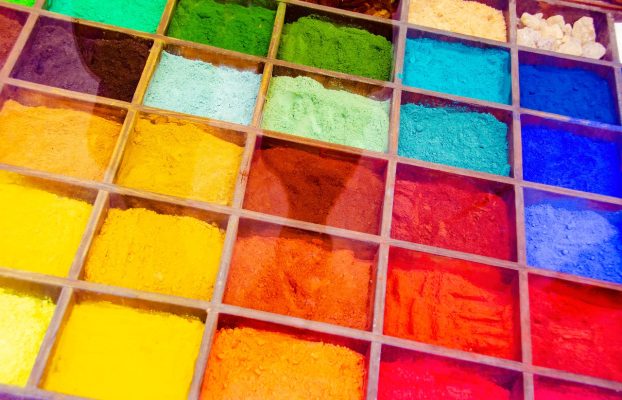Inorganic Pigments for Paints
In the fascinating world of painting, pigments play a crucial role in creating vibrant and long-lasting colors. Among the available options, inorganic pigments have gained popularity due to their unique properties and versatility in various artistic and industrial applications.
Inorganic pigments for paints are solid substances insoluble in coating systems, designed to confer color and other specific properties to paints. Unlike organic pigments, inorganic ones stand out for their resistance to degradation caused by light and other environmental factors.
Color Durability: Inorganic pigments ensure exceptional color durability, resisting fading caused by exposure to sunlight and adverse weather conditions.
Protection against Environmental Factors: They contribute to surface protection by resisting corrosion and degradation caused by rain, temperature changes, and other environmental elements.
Compatibility with Various Substrates: They are compatible with a wide range of substrates, including metal, wood, concrete, and more, making them versatile for various applications.
Chemical Stability: Inorganic pigments exhibit chemical stability, ensuring color consistency and paint integrity over time.
UV Radiation Resistance: They offer resistance to ultraviolet radiation, protecting painted surfaces from degradation caused by prolonged exposure to the sun.
Wide Range of Colors: They provide a broad spectrum of colors, allowing designers and builders to choose specific shades to meet the aesthetic needs of the project.
Ease of Application: Inorganic pigments are easy to incorporate into various paint formulations, facilitating their application on a variety of surfaces.
Painting of Metal Structures: Widely used in painting metal structures to provide corrosion protection and enhance aesthetics.
Facade Coating: Applied in the coating of building facades to improve weather resistance and maintain the original appearance.
Painting of Civil Infrastructure: Used in painting projects for bridges, roads, and other infrastructures to improve visibility and surface resistance.
Coating of Architectural Elements: Essential in coating architectural elements such as columns and cornices to provide protection and enhance aesthetics.
Marking of Signs and Roadways: Applied in road marking paints for roads and signs, improving visibility and durability of the markings.
Color Longevity: Inorganic pigments ensure exceptional color longevity, preserving the original aesthetics of painted surfaces.
Long-lasting Protection: They contribute to long-lasting protection of structures by resisting degradation caused by adverse environmental conditions.
Variety of Applications: Their compatibility with various substrates allows for a variety of applications, from civil infrastructure to architectural elements.
Stability in Outdoor Environments: Inorganic pigments are particularly effective in outdoor environments, where they resist UV radiation and exposure to the elements.
Color Consistency: They offer color consistency over time, ensuring that painted surfaces maintain their original appearance.
Anticorrosives
Bismuth Vanadate
Carbon Blacks
CICP-durables
Chromium Oxide
Cuprous Oxide
Hybrids
Iron Oxide
Thermal Iron Oxide
Titanium Dioxide
Related News Posts Trends
On our blog you will find articles about our products and industries


